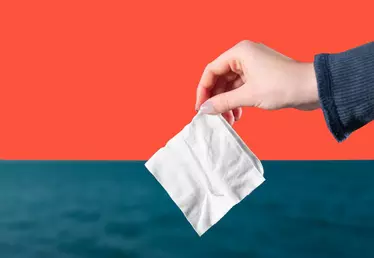

The ultimate guide to preserving your clothes
3 min
Less than 1% of the clothes we throw away are used to make new clothes, and 85% go to landfill each year, making textiles one of the most poorly recycled materials in the world. Why? It’s costly, takes complex expensive processes, and with current infrastructure it is cheaper to make new and buy new. But the real, long term cost is the planet’s welfare. Here are some cheap and low-effort ways you can make your clothes last longer, to slow down fast fashion, and save you money in the long run.
Preserving denim
Your jeans are a go-to reliable item that can, with the right treatment, last for over a decade. It’s important to use the right detergent, one specifically designed for color protection, or darker garments. Many laundry detergents include optical brighteners, chemicals which lighten your fabrics, but fade denim over time. When putting jeans in the wash, always turn them inside out to reduce the loss of dye. If it’s the first time you wash them, try adding them to a sink of lukewarm water and salt, to set the dye.
But not all jeans are created equal? Raw denim, unwashed, untreated denim, has a significantly smaller carbon footprint, as the denim only undergoes cutting and sewing, and not the chemical and water treatments of other denim.
Keeping wool and knitwear in good conditions
Wool is a raw material that’s prized for its insulating qualities. But how do you keep your knitted jumpers in tip top condition? One of the most important factors with wool and other knitted clothes with similar materials is heat.
Ensure that you wash wool infrequently, even musty odors will naturally leave fabrics like wool or cashmere when hung in fresh air for a day.
When it’s time to wash, do so by hand, rubbing a small amount of clear soap into the armpits, and rinsing 3 times with cold water, or place in your washing machine on a cool cycle. Never hang the wet clothing! Instead, lay it out on a flat surface and wait to dry. During everyday wear, using an electric razor to remove pilling.
Making cotton garments last longer
Cotton is a thirsty material!
It takes 2,700 liters of water to produce one cotton T-shirt. That’s enough drinking water for a person for 2 ½ years. Buying fewer cotton garments can prevent this waste.
For the cotton you do own, ensure it is washed inside out. Check the fabric label to wash it at the correct temperature. Most cotton should be washed inside out and at 30°c to preserve the dye. Try carrying a stain remover stick when you’re out and about, and when in doubt, apply cold water immediately after the fabric has been stained.
Taking care of synthetic fabrics
Synthetic fabrics are materials made with synthetic synthesis and plastics, rather than natural fibers. You’ll probably have them in your closet - polyester, acrylic and nylon. It’s important to wash these fabrics inside out in cool water, a maximum of 30°c in a washing machine. When synthetic fabrics are washed, they release microplastics as well as dye, so washing them infrequently is important to reduce waste water pollution, and to maintain the garment.
When possible, buying high quality clothing that will endure and second-hand or vintage clothing reduces the demand for fast fashion, and saves money in the long term. Remember: buy slow, wash cold, and launder infrequently!











